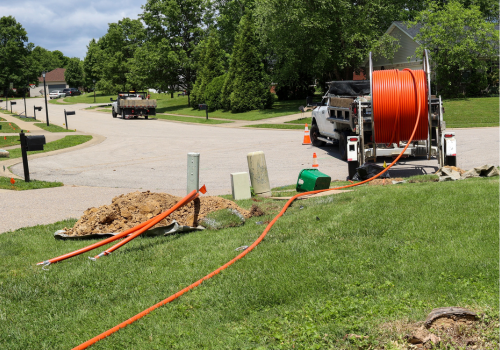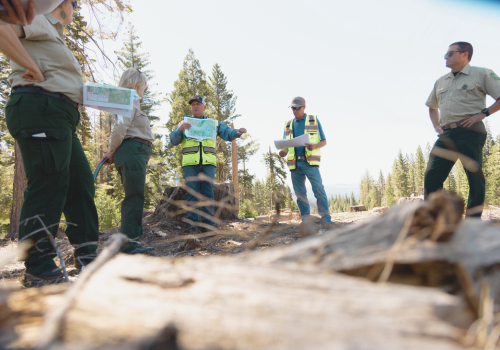There are numerous workforce development and training opportunities available for people currently in, or who want to work in the utilities industry.
“Most of our member companies will hire people with no background in the work for which they’re being hired, and then provide on-the-job training or some type of third-party training,” says Tim Wagner, President & CEO of the Power & Communication Contractors Association (PCCA). “With proper training, an employee with no experience could rise to the position of superintendent or even project manager within 10 years.”
The utility labor market has many different entry points for people with varying degrees of skills, education, and experience.
Training opportunities
Besides on-the-job training, potential workers are trained through paid internships, apprenticeships, certificate programs, and two-year associate degree programs. “Through various industry and government programs, a person can become a utility technician, get a commercial driver’s license, receive OSHA (Occupational Safety and Health Administration) training, and become eminently hirable,” says Wagner.
“Organizations need to provide all workers with formal training, however informal training should be a constant on-going effort,” says Donna Clark, Vice President of Education and Technical Services, American Traffic Safety Services Association (ATSSA). “We believe that training is not ‘one and done’. That’s why we offer certification—to ensure that workers are constantly being trained on the latest technology, equipment, procedures – certification shows a commitment to the profession and helps ensure that workers are kept up to date.”
A lot of utility work takes place on or near streets, so traffic safety training is important. And Clark says there are many training and development opportunities in the roadway safety infrastructure industry as well.
“Anyone that works out on the roadway – regardless of the level or position of the worker – should and must be trained,” says Clark. “We need to make sure our workers have the tools they need to keep themselves and the traveling public safe while improving our infrastructure and keeping America moving.”
ATSSA has a very robust catalog of courses. They train and/or certify workers in flagging, temporary traffic control, pavement marking installation, guardrail installation, traffic signals management, and many other jobs.
“In the last couple of years, we have heavily focused on roadway worker safety, and to that end we are emphasizing the need to create a culture of safety within organizations – this includes formal training, toolbox talks, safety briefings, and more,” says Clark. “We are passionate about ensuring that workers go home to their families at the end of the workday.”
PCCA promotes apprenticeship training as a member of the Telecommunications Industry Registered Apprenticeship Program (TIRAP).
“Through TIRAP, companies enter employees into an apprenticeship where they learn specific skills for the job, such as climbing poles or splicing fiber, for example,” says Wagner. “The company has designated mentors on staff who are responsible for overseeing the apprenticeship training. After the apprenticeship, individuals have the skills they need for a successful career and the knowledge they need to work safely."
All of the occupations in TIRAP are certified through the US Department of Labor, which has approved the curriculum for each occupation. In addition, more and more technical schools and community colleges across the country are offering certificate programs and associate degree programs in utility construction.
Labor shortages
Upskilling employees helps retain them as they feel ingratiated toward the company that is investing in them. And, worker retention is vital in an industry facing such a large and protracted labor shortage.
“Federal, state, and local governments have poured a lot of money into this industry segment, which has exacerbated the worker shortage,” says Wagner.
Just on the broadband side, the federal government has provided the American Recovery and Reinvestment Act, Broadband Reconnect Program, Rural Digital Opportunity Fund, State Revolving Loan Fund, Emergency Connectivity Fund, American Rescue Plan, Digital Equity Plan, Affordable Connectivity Program, and Broadband Equity and Access Deployment Program.
“I hear a lot about splicer training, but most folks don't know that for every splicer, you need eight to ten other workers to trench, plow, bore, or string cable overhead before splicers can do their job,” Wagner says. "We need workers for those positions as well."
Without these workers, many of the entities that receive government grants and loans won't be able to achieve their infrastructure objectives, which is why PCCA became more involved in workforce development.
PCCA identified in 2016 that the number-one issue facing its approximately 120 member companies was the insufficient number of workers in the industry.
“Our industry is being overstrained when it comes to the demand for labor, and creating a pipeline for workers is still our number-one issue,” says Wagner. “We conducted a survey of our members in 2020 that showed companies were short 17 crews on average. We expect to see similar or worse results when we conduct the survey this year.”
Recruitment has become a priority for relevant members of the industry. PCCA just finished a series of recruiting videos shot on members' job sites, which Wagner hopes will do a better job of educating people about careers in the utility industry.
"Some young people are skeptical of blue-collar jobs, and many parents insist on a four-year college despite strong evidence that a person who receives technical training can out-earn someone who gets a four-year degree and is saddled with student-loan debt,” says Wagner. These are great careers with excellent salaries and benefits and plenty of room for advancement. We just have to do a better job at communicating those facts.”
Read More
5 Tips for Recruiting the Next Generation of Utility Workers












